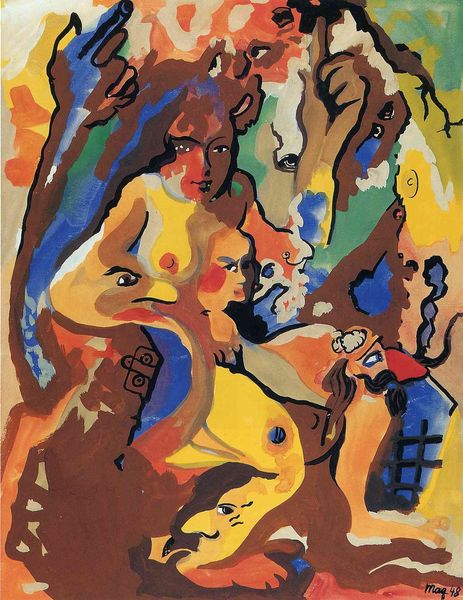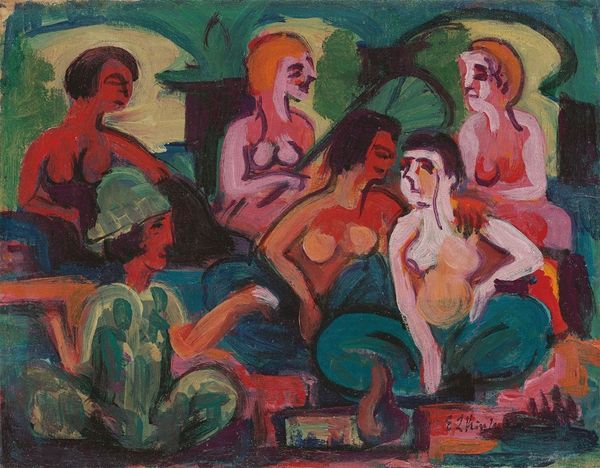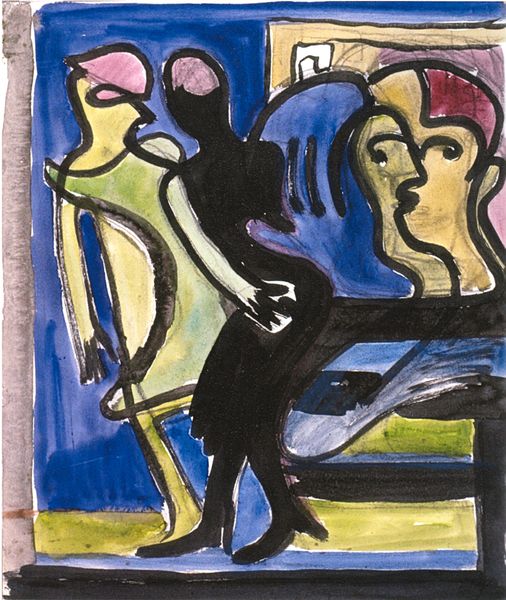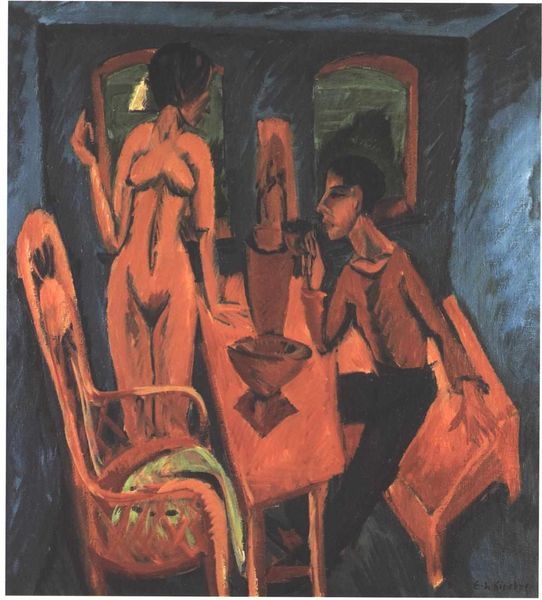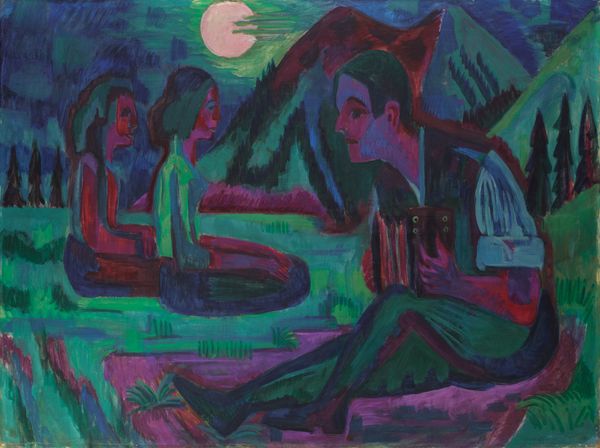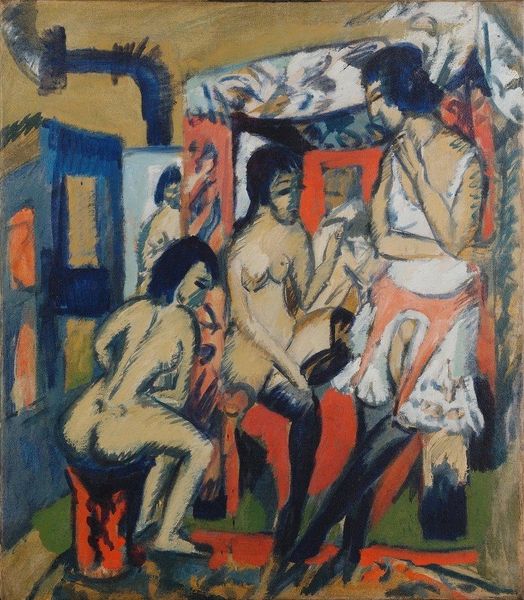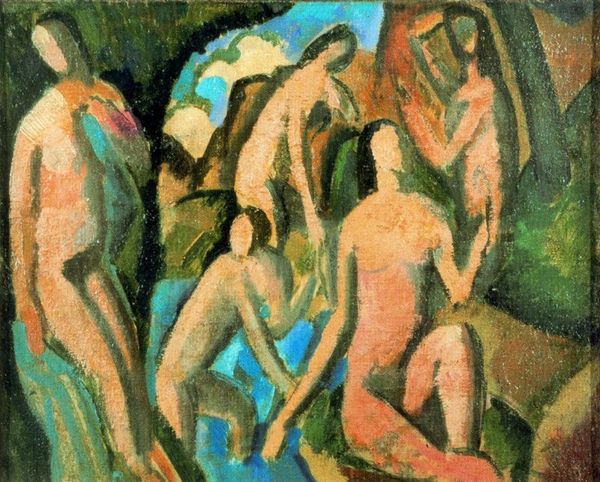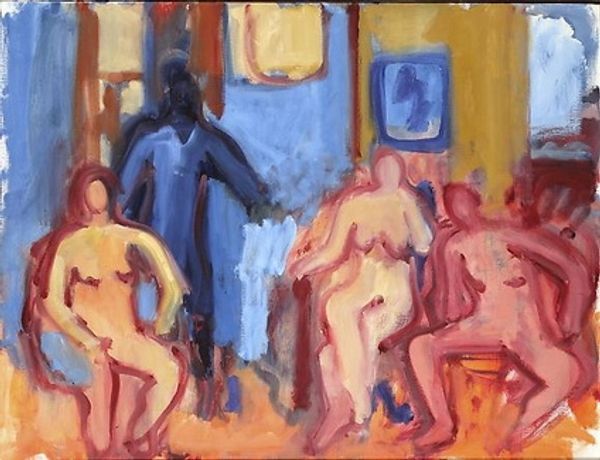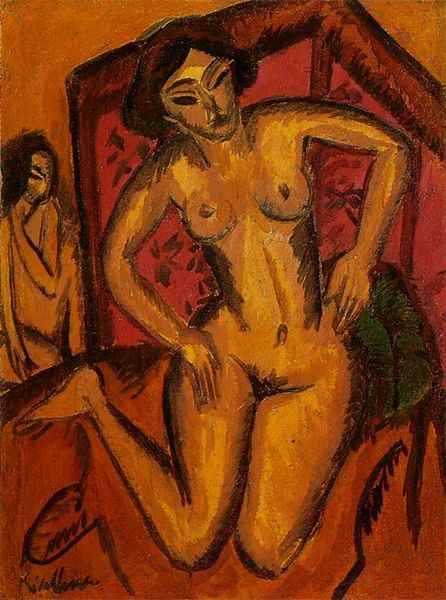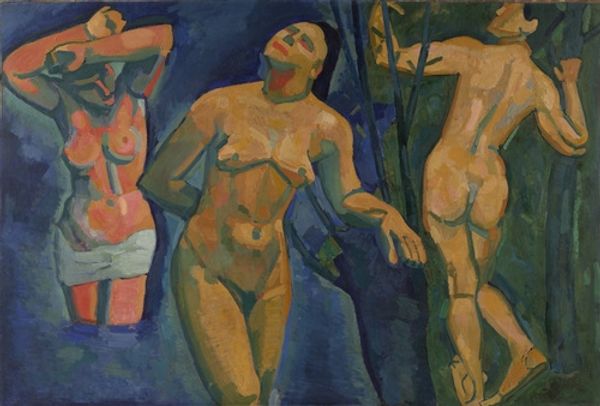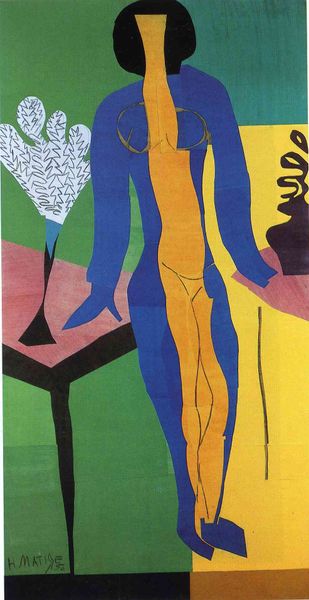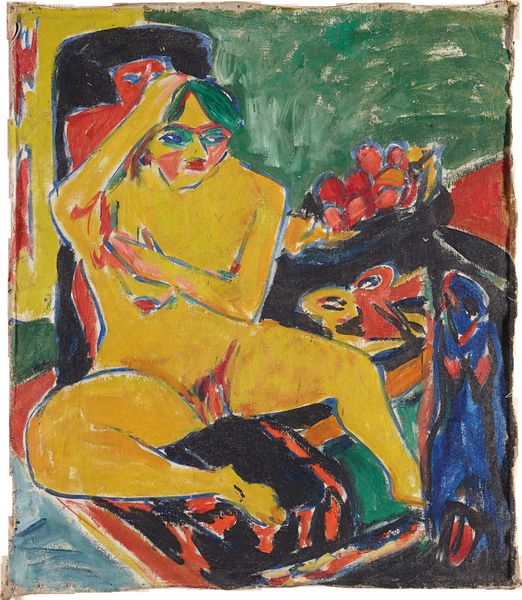
Copyright: Public domain
Curator: Ernst Ludwig Kirchner's “Still Life with Sculpture,” an oil on canvas completed in 1912, showcases the artist's foray into German Expressionism. What catches your eye first? Editor: The intensity of the blues and purples gives it a melancholic feeling, almost surreal. The angularity and color choices convey an uneasy stillness, don’t you think? Curator: Expressionism frequently aimed for precisely that unease. It was a reaction to the rapid social changes. Kirchner co-founded the artist group Die Brücke in Dresden in 1905, and their art really spoke to those themes of alienation and modern anxiety. Editor: I can see that here. Look at these figures—they're nude, but not sensual, and rather despondent, rendered in an almost crude way. What can we gather from them? Curator: Kirchner was invested in portraying primal human emotions. He turned to non-western art and primitive art in ethnological museums, such as that which was shown in Dresden. We know that the Brücke artists were adamant about creating their own aesthetic which drew on a primitive collective aesthetic that could cut through what they saw as corrupt conventions. This enabled him to portray universal feelings—alienation but also unity. Editor: That makes sense. The composition is a little perplexing—is that really the sculpture alluded to in the title? Curator: Possibly; it’s difficult to identify a specific work of sculpture. It serves more as a visual and symbolic component of this Expressionist interior than a strict still-life subject. The arrangement feels both intimate and estranged—an intriguing paradox. Editor: Definitely. There is an odd contrast to the vibrant purple blooms that brings this all together. Curator: Yes! Kirchner is able to create something really provocative, while still creating something really pleasurable in terms of texture and form. It demonstrates a society on the precipice. Editor: It’s fascinating to consider the social and political contexts from which this artwork emerges. What do you think visitors take away from this today? Curator: Hopefully an engagement with not only this critical moment in art history but the recognition of parallels that continue to resonate today.
Comments
No comments
Be the first to comment and join the conversation on the ultimate creative platform.
